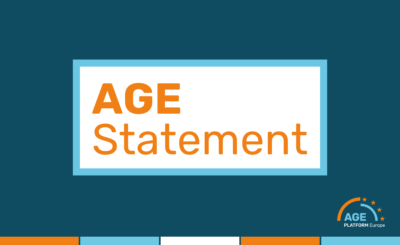AGE Platform Europe, Eurocarers and SCA, together with MEPs Jean Lambert, Heinz K. Becker and Marian Harkin organised on 28 January at the European Parliament a conference of the current state of continence care to discuss how to design better care pathways for Europe’s older citizens.
According to Health First Europe, between 25 and 50 million, i.e. 4-8% of Europe’s total population, are suffering from incontinence. Pathways for care continence tend to be rather chaotic, with poor diagnosis and lack of adequate care and support. Considering containment products and related care, the estimated cost per patient is around €3.000 – 5.000 per year, depending on country, care settings and nature of the disease.
Speakers and participants acknowledged the consequences of the taboo prevailing on the issue on incontinence, underlining the great extent to which it affects care and social inclusion of patients and pressures their informal carers. Moreover, it has been shown that continence care was badly cut during austerity measures, for example in Scotland, as it was mistakenly not seen as a priority.
A new model of care pathway was presented on that occasion, focusing on more rigorous assessment and reliable diagnosis, and complemented by better coordinated social and health care and increased patients’ empowerment and self-care. Speakers specifically called for better training of healthcare professionals to perform better such assessments and diagnosis, as well as quality monitoring and support.
Anne-Sophie Parent, AGE Platform Europe Secretary General, recalled the importance of creating age-friendly environments that take on board the needs of persons with incontinence. Good urban planning, i.e. the provision of clean and accessible toilets outside the home, as well as bins in men’s toilets, is indeed key to support older persons going out of their homes and participate in their communities.
Download here SCA publication ‘Summary of Optimum Continence Service Specification’






